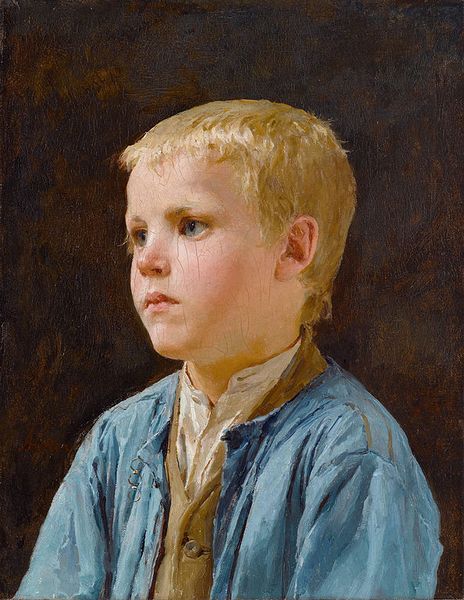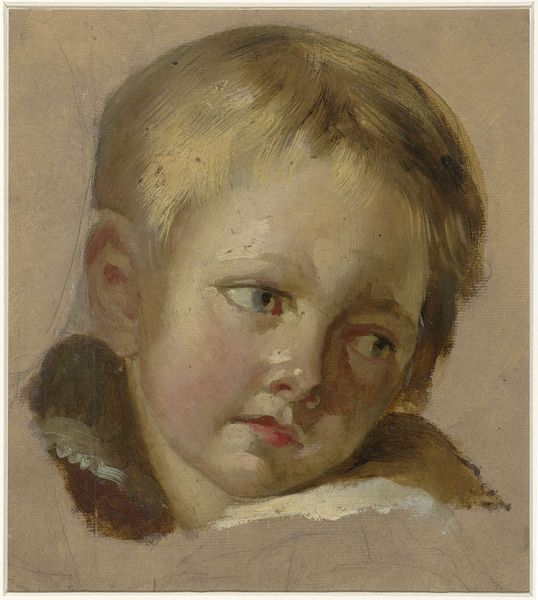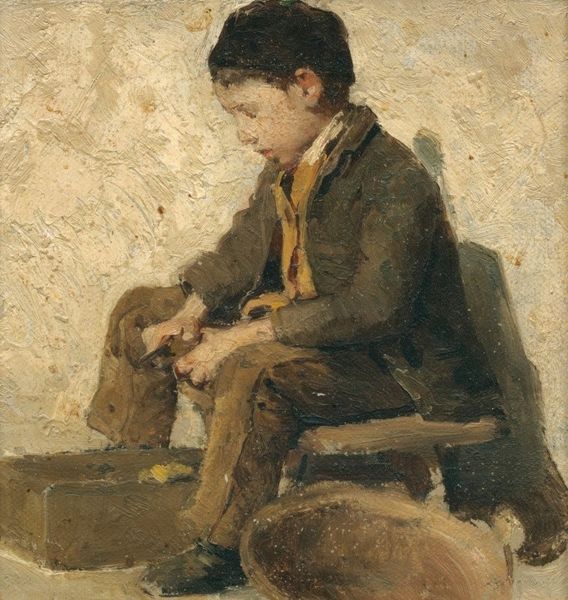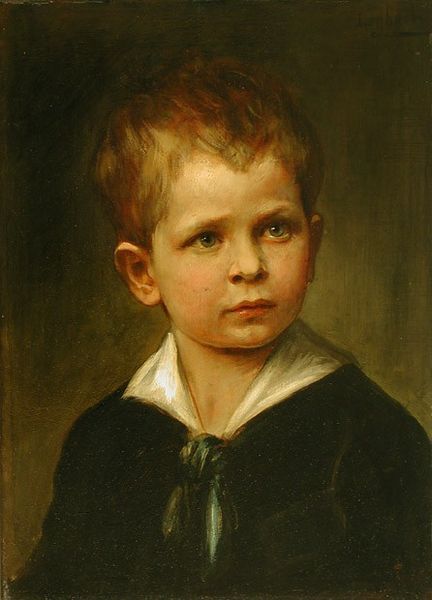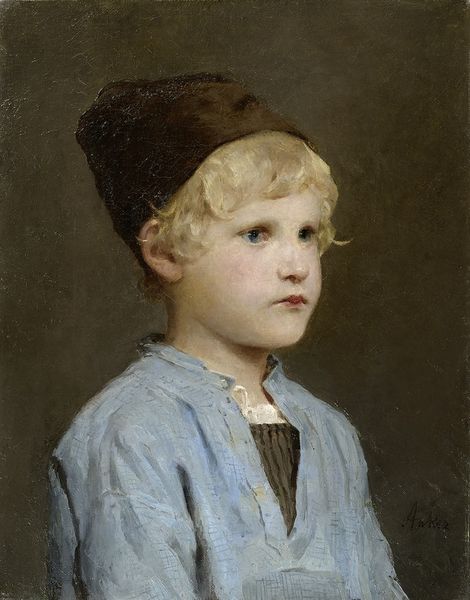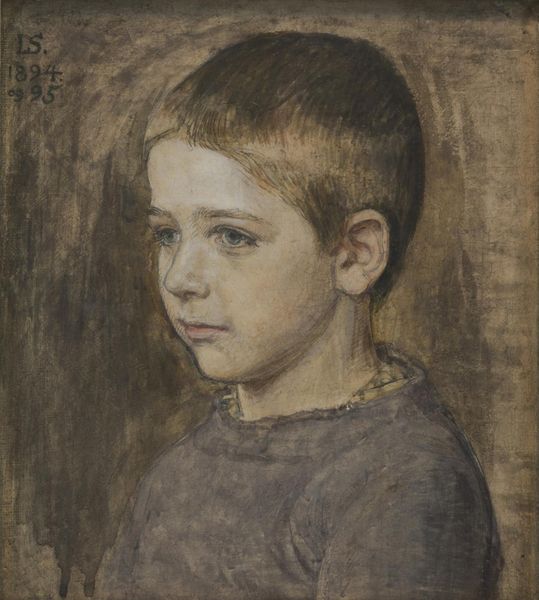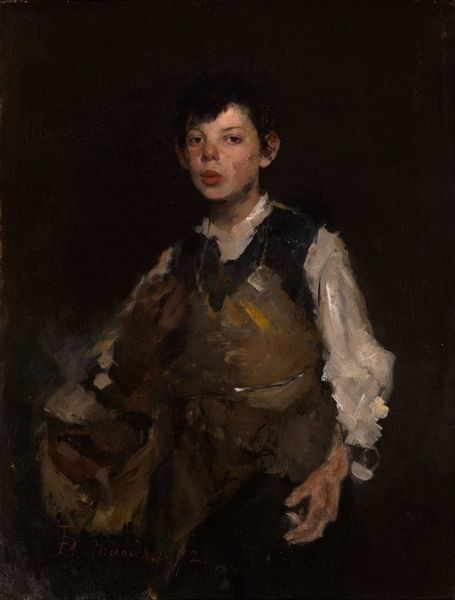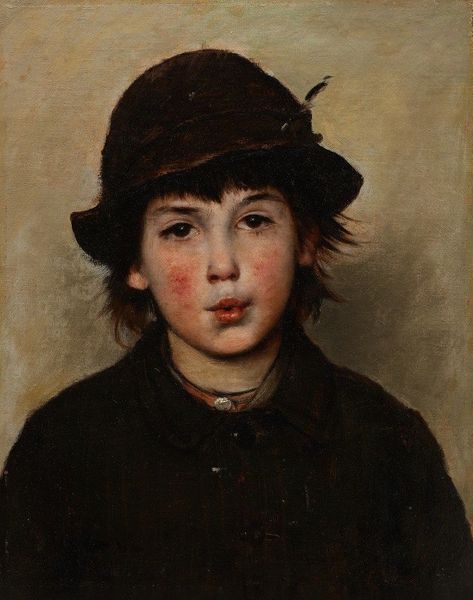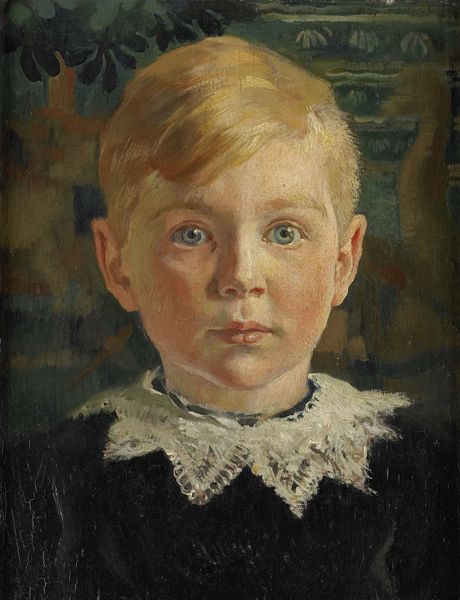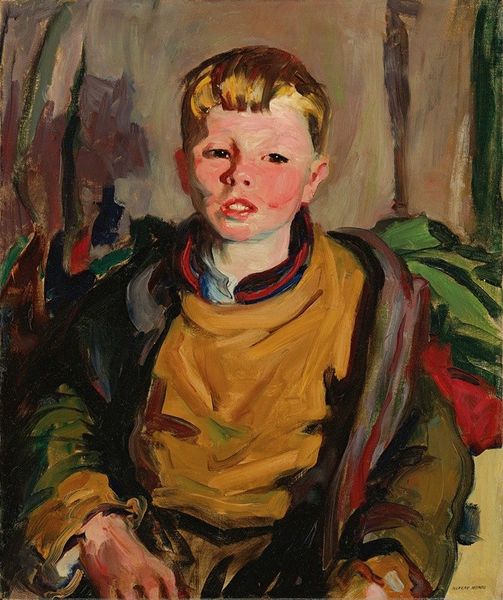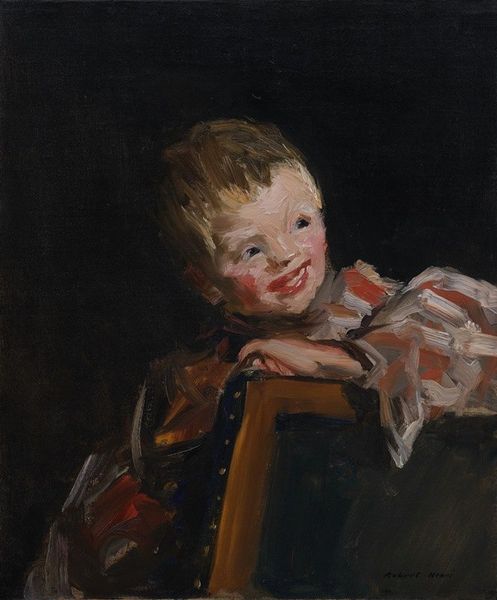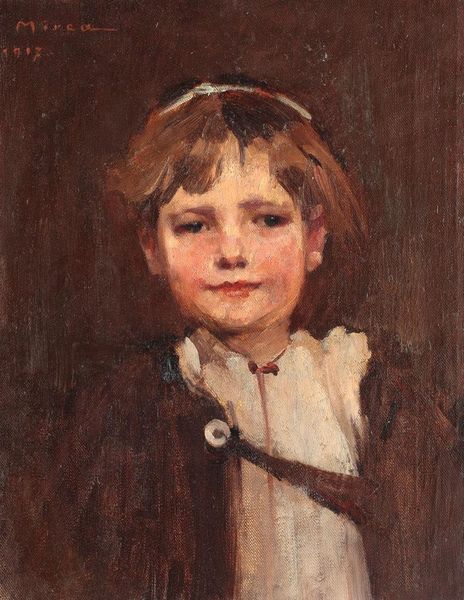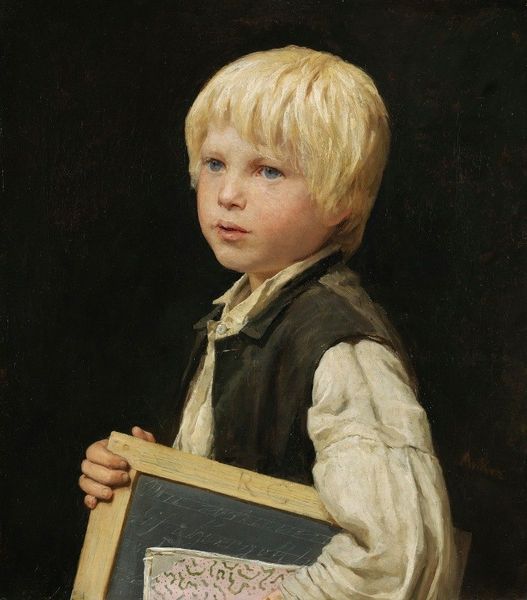
Copyright: Public Domain: Artvee
Curator: Franz von Lenbach painted this piece, titled "Georg, der Bruder des Künstlers, am Tisch sitzend," which translates to "Georg, the Artist’s Brother, Sitting at the Table" back in 1854. Editor: There’s a wonderful immediacy about it. It feels intimate and raw, almost unfinished. The limited color palette contributes to a melancholic feel. You can sense the texture of the oil paint. Curator: It does capture a certain realism. Lenbach painted this during a period when he was still studying, early in his career. Genre paintings like this, which were studies of everyday life, were increasingly popular amongst artists looking to democratize painting beyond mythological and religious subject matter. Editor: Looking at the boy’s simple garment and the roughly painted table, you wonder what their lives were actually like. What were the materials available to Lenbach at the time, and how did his socio-economic status impact his choices? You almost feel that roughness—that of the surfaces in the image itself. Curator: Lenbach's family was modest, yes, and one can see the rise of a new merchant class reflected in his patronage later on. But here he is capturing something much more simple and genuine, before he reached that status. His later portraits are grand and very commissioned. Here, we are given a look into his personal world. The gesture of Georg’s hand supporting his head is very genuine, one any child would make when perhaps tired or bored. It gives a peek into that transient state of childhood thought and reverie. Editor: And notice how the light falls, almost theatrical despite the domestic subject. There’s something quite potent and compelling achieved using such minimal means. It asks us to really focus on the character and weight of materiality involved, on labor as much as on affect. Curator: Absolutely. There's a sense of stillness that encourages the viewer to consider the sitter and the artist. A window into both the past and the intimacy of brotherhood. Editor: Well, seeing it this way certainly shifts how one approaches art. I’m more compelled to question where its materials and making processes come from and who benefits socially and economically. Curator: Understanding that shifts how we view artistic intentions.
Comments
No comments
Be the first to comment and join the conversation on the ultimate creative platform.
